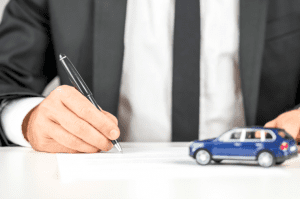Car Loans And Bankruptcy

Filing for bankruptcy can help remove the burdens of debt. Get the help you need with a free consultation. contact us today.
Understanding Dischargeable Debt
For both Chapter 7 or Chapter 13 bankruptcy, debts fall into one of two categories: dischargeable and nondischargeable. Dischargeable debts are those that can be eliminated through bankruptcy, assuming the petition is accepted by the court. Some examples of dischargeable, or unsecured debts, are credit card debts, medical bills, personal loans and unpaid utility bills. Secured debts, like auto loans or home mortgages, are those in which the lender can use the property as collateral against the loan. So, are auto loans considered dischargeable?
Auto Loans As Dischargeable Debt
The good news is that during bankruptcy, an auto loan is generally considered a type of debt that can be discharged if the debtor is struggling to make the payments. This means that the bankruptcy can “wipe away” the auto loan debt so that the filer can make a fresh start. Unfortunately, the lender also has a right to repossess, or take back, an automobile that has been financed if payments are not being made.
Car Loans And Bankruptcy<
In a Chapter 7 bankruptcy, an auto loan debt can be discharged as described above, but this does not always mean it will be possible to retain the car. Here are three potential scenarios:
- Surrender: Filers who are unable to continue making payments on the auto loan can surrender the car back to the financier. Without a vehicle, it can be difficult to get to work, pick up the kids from school or even do simple errands; however, after getting finances back in order it may be possible to purchase a lower priced vehicle.
- Redeem: Filers who are able to find a way to pay off the remaining balance of the auto loan in one payment, may exercise the option to redeem the car. At this point, the car would be owned by the filer outright.
- Reaffirm: Bankruptcy petitioners also have the option to reaffirm the auto loan debt, which means they agree to continue making the auto loan payments as promised. In this scenario, the filer retains the vehicle and also keeps the debt.
In a Chapter 13 bankruptcy, borrowers are responsible for the full amount of the car loan if the loan is newer than 910 days, and responsible for a prorated amount if the loan is older than 910 days. Filers who are able to continue making car loan payment are allowed to do and retain the vehicle, and the repayment is incorporated into the overall bankruptcy repayment plan.
Get The Best Guidance
Bankruptcy is a highly complex process, especially when auto loans and personal property are involved. To get the best set of options for your unique financial situation, look for a bankruptcy attorney who has deep expertise with Maryland bankruptcy laws. Contact The Law Offices of Jefferey M. Sirody & Associates for a free consultation. Our experienced attorneys will help you find the best financial path forward.
